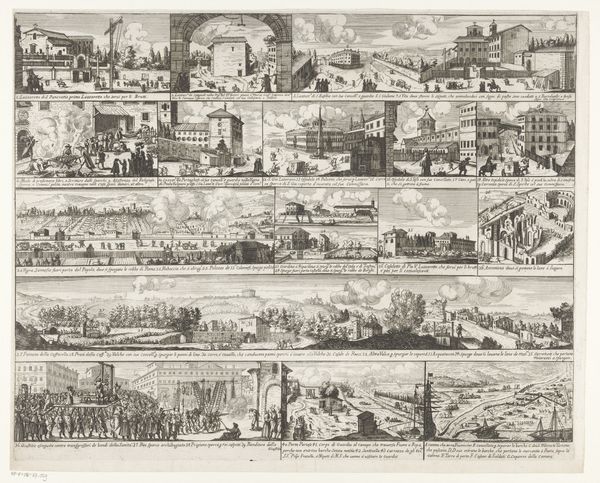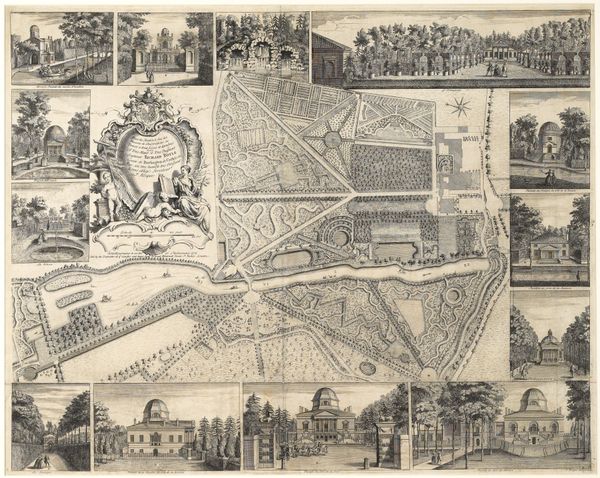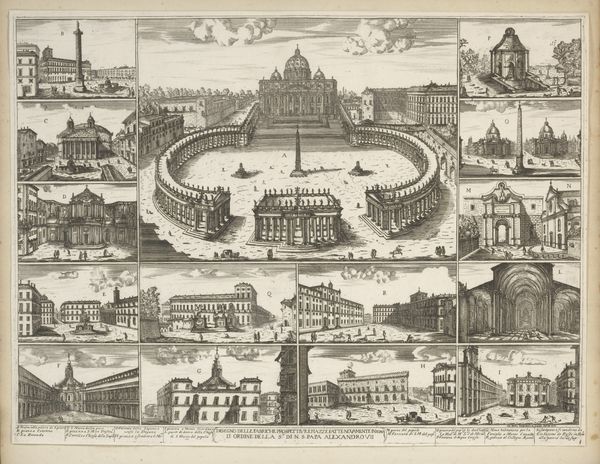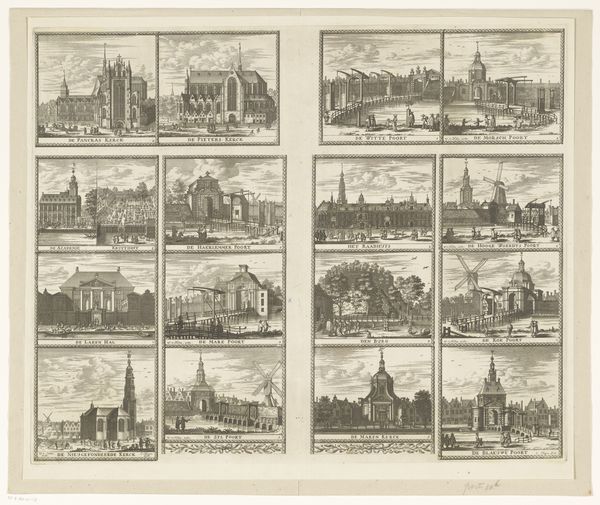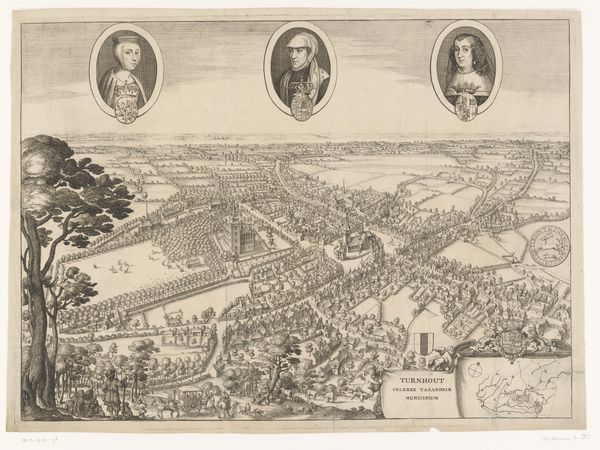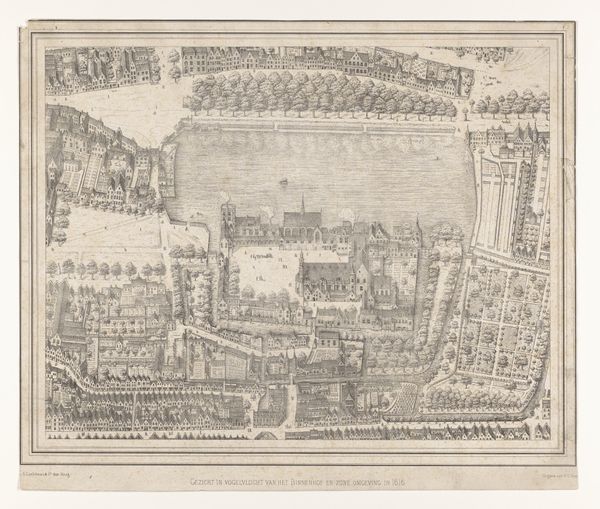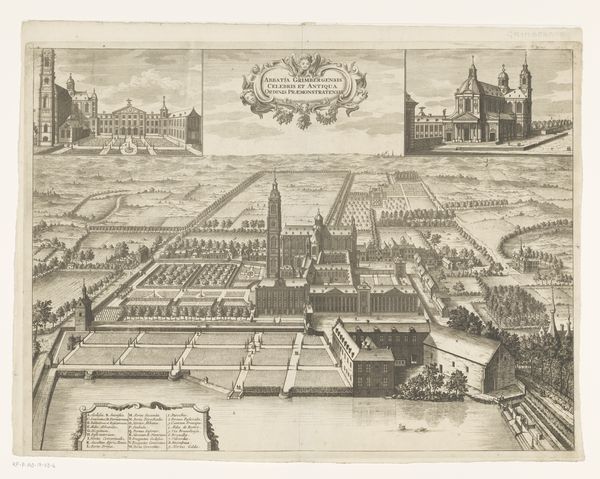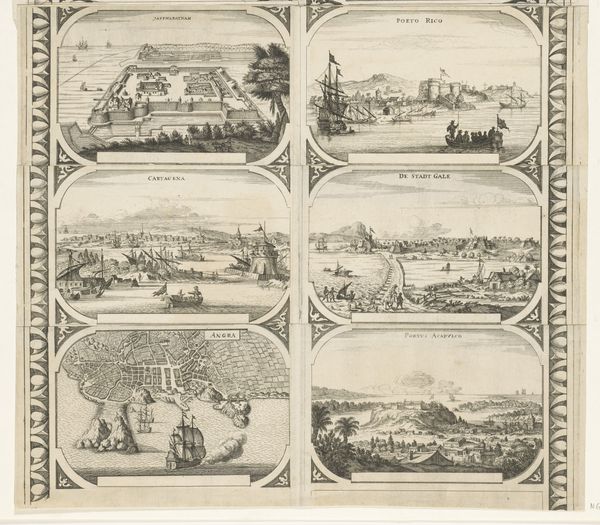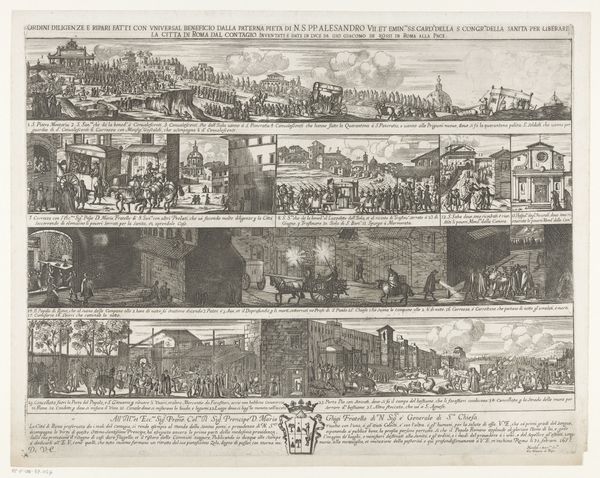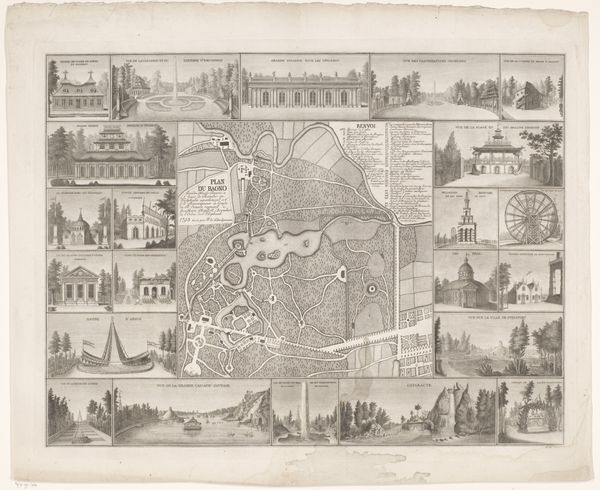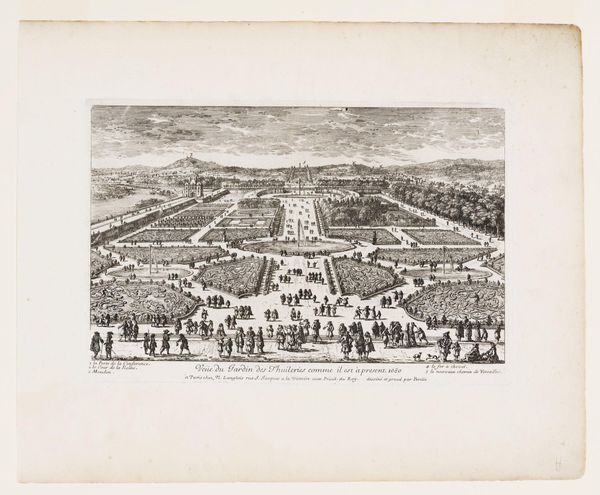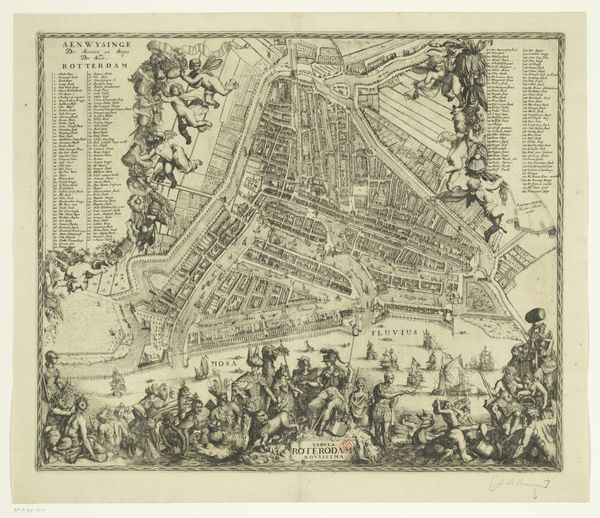
Gezichten op Paleis Het Loo, de bijbehorende gebouwen en het bijbehorende park Possibly 1690 - 1737
0:00
0:00
romeyndehooghe
Rijksmuseum
print, engraving, architecture
#
garden
#
baroque
# print
#
landscape
#
cityscape
#
history-painting
#
engraving
#
architecture
Dimensions: height 122 cm, width 132.2 cm, depth 4.8 cm, height 1190 mm, width 1270 mm
Copyright: Rijks Museum: Open Domain
Editor: This print, "Gezichten op Paleis Het Loo, de bijbehorende gebouwen en het bijbehorende park," possibly made between 1690 and 1737 by Romeyn de Hooghe, presents a detailed panorama of the palace and its gardens. What strikes me is how meticulously planned everything appears. What do you see in this work? Curator: The organization of space is key. Think about what a royal garden symbolizes. It's about power, control, and the imposition of order onto the natural world. This image, functioning almost like a blueprint, served to project and reinforce that image. Consider how the surrounding smaller scenes amplify this, capturing life lived according to protocol. Editor: That’s fascinating, a blueprint for power! So the very act of depicting the gardens in this way, with such precision, becomes part of the message? Curator: Precisely. And what is history-painting without an exact image of the stage it played out upon? Reflect on the deliberate placement of figures within the garden – their choreography suggesting rituals, hierarchies, and a clear visual language that the intended audience would have instantly grasped. Even the smallest figure contributes to the broader iconography. Editor: It's incredible how much is communicated through the spatial arrangements and the symbolic value that projects outwardly, like ripples in water. Curator: Think of these meticulously placed statues: classical figures often used to convey specific virtues, or allegories that tie the present ruler to a lineage of great leaders. Even the specific flowers planted might have carried coded meanings lost to us now, but obvious to a 17th-century audience. What lasting effect might images like this have? Editor: I never would have considered that flowers or statues held coded meaning. So images of that time became lasting memories as well. Curator: The artist is creating not just a representation but a memory, solidifying a particular narrative for generations to come. It truly shows how an image extends through cultural memory.
Comments
No comments
Be the first to comment and join the conversation on the ultimate creative platform.
